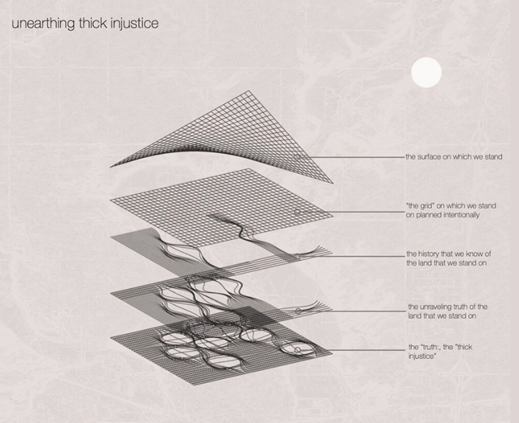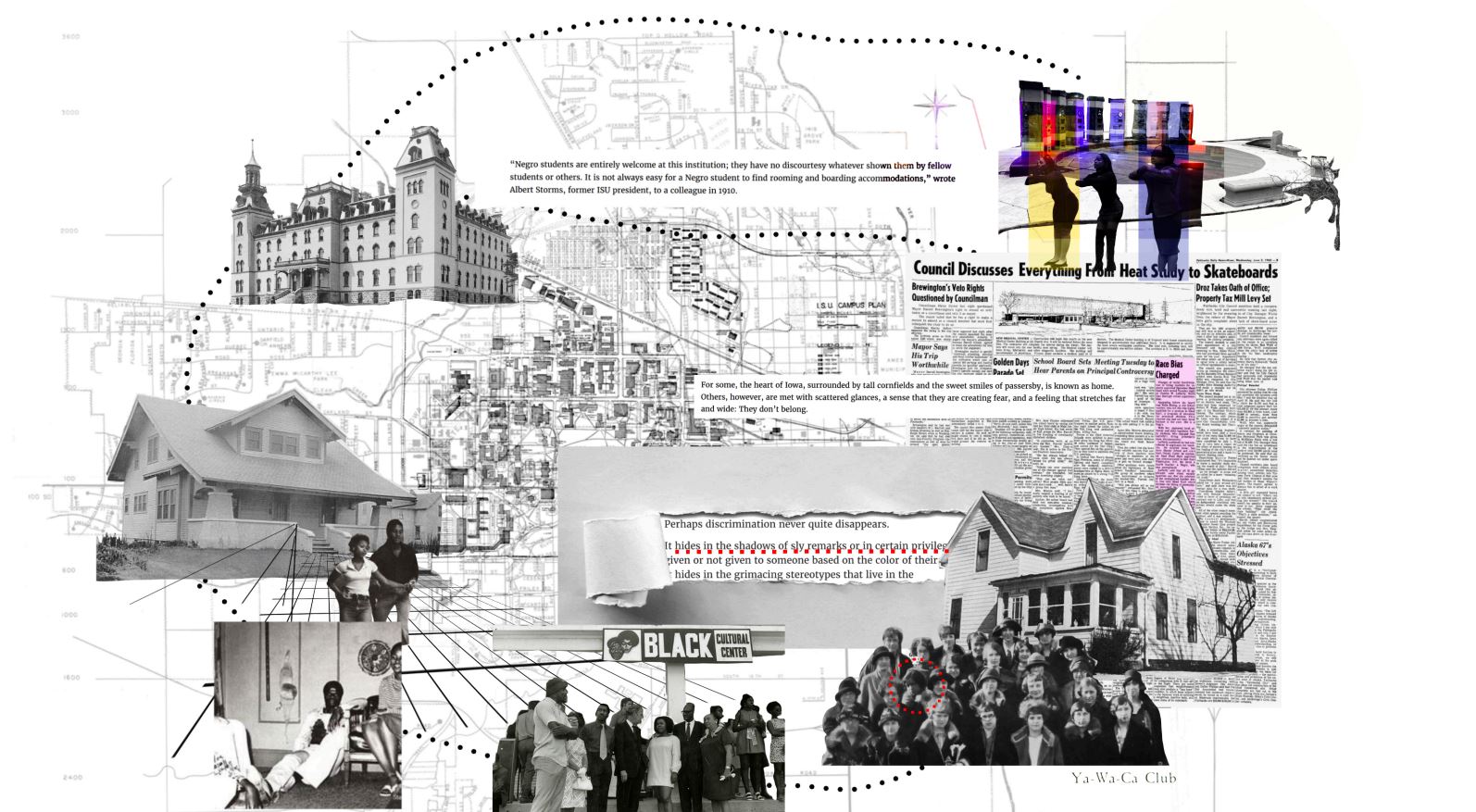If These Walls Could Talk: a project update from Hiba Salih

Unearthing Thick Injustice
Throughout our lives, the landscape has always been a witness to events that took part in history. The saying “if these walls could talk” informs our interest in the landscape and the stories it holds; if the landscape could talk, what would it say? The landscape is a site of truths- embedded and untold- how do we unearth these truths? Our intended research question is: what are the stories that the landscape is holding in sites of care for BIPOC individuals and how do we unearth those stories. Our project consists of two main aspects that support each other; the digital component will reference the project in both its process and representation and the physical component will act as a manifestation of unearthing and presenting those stories.
The importance of knowing the history of a place that we reside in, whether it is temporary or not, is integral to our self-discovery, self realization and acknowledging of our history. This project is an extension of the previous research done to unearth the historical presence of Black folks in Ames and Iowa State. We have asked ourselves which sites of care give Black folks in Iowa State an opportunity to feel welcomed and safe and what their stories are. We learned through the first phase of archiving historical projects and stories that safe spaces are not only physical spaces; they reside in communities that can share a similar narrative. This project was an opportunity for us to think of research as a hands-on and innovative practice. We found that it can be quite difficult to break away from the normalized methodologies of research and to start thinking of storytelling as a central practice.
By looking at the Oral History project conducted by the Ames Historical Museum in the 1970s that documented the experiences of Black residents in Ames, we found that collecting people’s stories will give people a platform to exist in the present. The Oral History project includes interviews with Black individuals who lived in Ames during the 20th century and offers a glimpse into the daily lives of Black families in the community. By mirroring this methodology we will be collecting people’s narratives and showcase them in an installation to visually show how people’s stories and experiences overlap with history. The physical installation is a feature of the project that allows us to connect the past to the present so that we could find ways of storytelling as a method of record keeping and creating artifacts that encapsulates the present. An installation that individuals can partake in gives agency back to the storytellers without having their narratives be re-written or misinterpreted. We are excited to see how the physical installation manifests itself as an artifact.

The Tracing Race Initiative was an opportunity for me to reflect on my own positionality as a Black female student in a PWI. I looked at archival photography of Iowa State campus’ buildings such as Old Main, BCC, and Iowa State campus grounds.I found out how architecture could foster an environment for care. The collage above is a manifesto of archived articles and photos of how I interpreted the history overlayed archival campus ground plans. The photo of Old Main - now Beardshear- served as the center of Iowa State’s campus life. This building housed classrooms, a library, a dormitory, a dining hall, and faculty residence. Several snippets from news articles that date back to 1965-1970 show how Black students are not seen or heard. In 1970, the George A. Jackson Black Cultural Center was established after the murder of Martin Luther King Jr. and Black students had gathered to form the “Afro American Students of Iowa State”. The BCC was a standalone nonprofit center with no official ties to Iowa State as the funds were coming from donors and students that advocated for a necessary safe space for Black students. The archival photographs are of beautiful moments that the BCC had when it was first established and continues to serve its purpose for Black students at Iowa State University. I wanted to focus on this specific space as it gave me a place to call home when I first started my college career in 2018. To see how sites of care only existed behind closed doors to being out in the open such as the NPHC memorial that was constructed in 2022, is to see the growth of how Iowa State’s architecture is embracing its Black students and faculty.
Through the process of revisiting architectural drawings and what happens in those spaces has made me better understand what sites of care mean to communities.
Part of tracing race is excavating the stories and real-life experiences of BIPOC individuals in a space where those stories and lives have been buried or misrepresented. This project intends to bring the margins to the center (BIPOC individuals) through the three main values of Inclusivity, Transparency and Intersectionality. I now understand how past research has brought the voices of history to the forefront and by asking for people’s narratives in the present we can preserve history now.
References
Historical maps and documents. ISU Historical Maps. (n.d.). Retrieved March 3, 2023, from https://www.fpm.iastate.edu/maps/historic/ Alex Connor, “A History of Diversity: Iowa State Over the Years,” Voices, Iowa State Daily, accessed February 11, 2019, http://iowastatevoices.com/article/history-diversity-iowa-state-over-years. Bailey, G. (2021, January 13). “A home away from home: The george a. jackson black cultural center”. “A Home Away From Home: The George A. Jackson Black Cultural Center” | University Library | Iowa State University. Retrieved March 3, 2023, from https://www.lib.iastate.edu/news/%E2%80%9C-home-away-home-george-jackson-black-cultural-center%E2%80%9D Gloria J Betcher, P. D. (2023, January 12). Biographies of Black Isc Students: A-L. ArcGIS StoryMaps. Retrieved March 3, 2023, from https://storymaps.arcgis.com/stories/8a04a6a73f75467e905dacefa67ba593